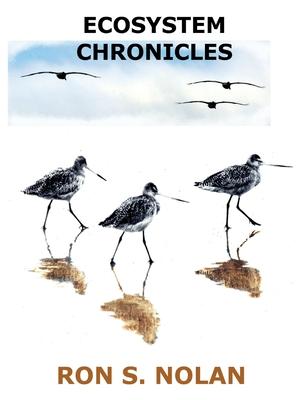"Understanding ecosystem science is becoming critically important around the globe and we all need to do everything possible to protect Planet Earth. Not only because it is the only nearby speck of dust that meets the stringent requirements for biological life, or that there is the risk of a catastrophic asteroid impact or uncontrollable sea level inundation, but there is awesome beauty here in nature.
Most people think of an ecosystem as the natural environment, or an area inhabited by certain types of plants or animals, or as a particular place or region--for example a lake in Northern California or a rain forest in South America. However, you may be surprised to learn that biologists think of them quite differently! It is the flow of energy and movement of chemicals within and between ecosystems that is the primary focus of ecosystem ecologists.
Ecosystem ecologists investigate the amounts, rates and the processes by which energy and materials flow through an ecosystem and which link the biotic to the abiotic components. In addition to traditional, descriptive field studies, ecosystem ecologists employ computer simulations to test and predict how nature may respond in hypothetical and actual circumstances. There are three main sections to the book.
Energy enters the ecosystem in the form of photons and electromagnetic radiation that is received from the sun. This energy is transformed by plants through photosynthesis into high energy compounds. The compounds are transferred through the food chain by herbivores feeding upon plants and carnivores feeding upon herbivores and other carnivores. Ultimately all of the solar energy input into an ecosystem will be converted into heat energy and exported out of the ecosystem.
The incoming solar energy, reflected shortwave and emitted longwave energy are the three components of the Earth's radiation budget. By analyzing long-term measurements of these radiation budget components, scientists can determine climate trends for our planet to model ecosystems and conduct experiments in order to determine interrelationships
Plants and animals require specific chemical compounds for cellular metabolism, growth and reproduction. These chemicals are called "nutrients" on a local scale and "biogeochemicals" on a global scale. Nutrients are transferred along the food chain when herbivores feed upon plants and carnivores feed upon animals.
In Section 3 we visit locations around the world which illustrate the fundamental princiles of ecosystem science combined with the beauty of the natural world. The Journeys take us from the depths of the Challenger Deep to the summits in the mountains of Idaho, and onwards to the sands and cacti of the deserts in Baja and then to the monk seals and reef fishes in the Hawaiian Islands...and amazing ecosystem discoveries like, ...
"Even though beginning at a depth of 200 meters there is little sunlight, enormous pressure and near freezing temperature, it is likely that marine animal populations numbers closely match or exceed the number of land animals." Source: Monterey Bay Aquarium website.
